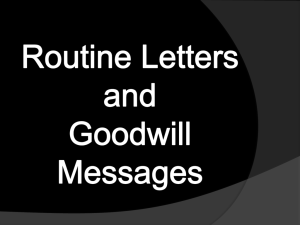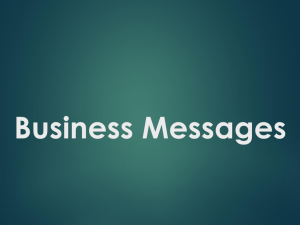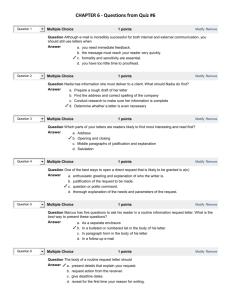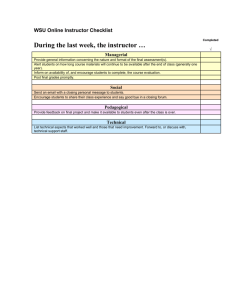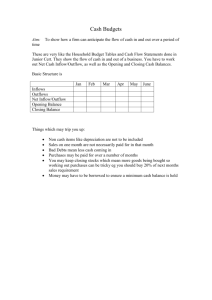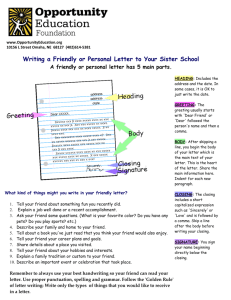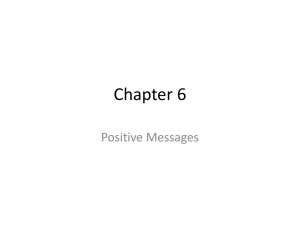Routine Letters
advertisement
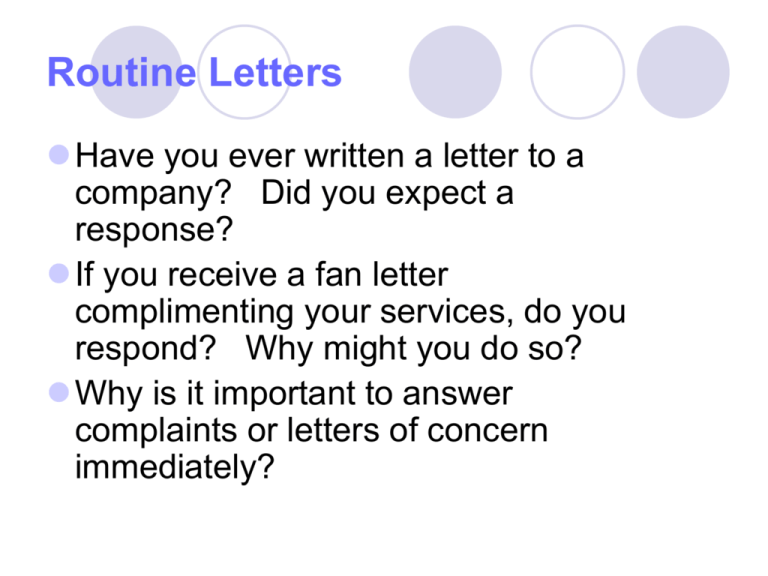
Routine Letters Have you ever written a letter to a company? Did you expect a response? If you receive a fan letter complimenting your services, do you respond? Why might you do so? Why is it important to answer complaints or letters of concern immediately? Purpose of Routine Letters Encourage product feedback Project a favorable company image Promote future business “A good business letter can get you a job interview, get you off the hook, or get you money. Why blow your chances of getting what you want with a letter that turns people off, rather than turning them on.” Characteristics of a Routine Letter - The Direct Approach Opening: Begin with the main idea and tell immediately why you are writing (purpose) Body: Present your details that explain the request or response. Group ideas together, and include graphic highlighting to spotlight main points. Closing: Be specific about what you want and what action you want taken. Provide an end date or deadline if appropriate. Placing an Order Opening: Tell your reader exactly what you want. “Please send ….” Body: List items, provide quantity, order number, complete description, unit price and total price. Prevent mistakes by including as much information as possible. When responding to an order, do the same thing. Closing: State how you plan to pay for the merchandise, when you want to receive the items and supply any special instructions. Express your appreciation. Making Claims Opening: Immediate describe what you want done (purpose). When a remedy is obvious state it. If not, explain your goal. Body: Explain the problem to justify your request. Provide details, be organized in your thoughts. Avoid being angry, or place blame. Closing: End with a tone that promotes goodwill. Request specific action, including an end date. Make sure they know how to respond to you. Granting a Claim Opening: When approving a claim, announce the good news immediately (purpose). Body: Strive to win back confidence and explain what went wrong. Be careful about admitting responsibility avoid negative language - trouble, regret, fault, blame don’t blame the customer, and don’t blame your staff. Closing: Show appreciation, and offer a goodwill gift if necessary. Requesting Information Opening: Ask your question. Avoid long explanations. Be direct in your approach. Body: Explain your purpose and provide details to assist your reader with your request. Use open-ended questions, rather than yes/no questions. Suggest reader benefits if there are any. Closing: Be specific about what action you want to be taken. Set an end date. Make it easy for them to respond, and show appreciation. Letters of Recommendation The central concern in these messages are HONESTY. You do not have to write one if you don’t want to. Opening: Name the candidate and position sought and describe your relationship with the person. Body: Strive to include statements about their skills, and definite task-related descriptions. Closing: Summarize candidates best points, and offer to supply additional information if needed. The Five S’s to Goodwill Messages Be Selfless: The “You” view Be Specific: Personalize the message Be Sincere: Be Genuine in your feelings Be Spontaneous: Avoid typical phrases. Be Short: Economical
